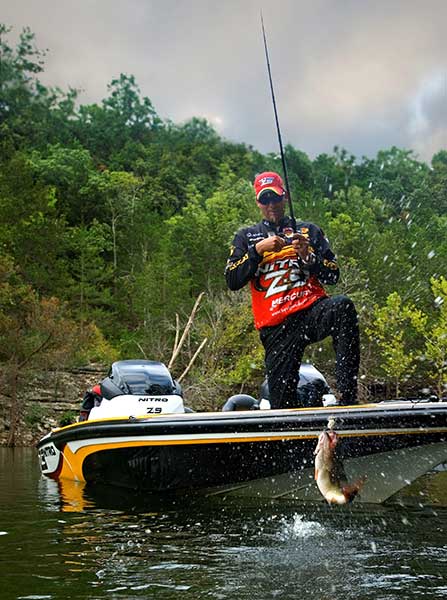By Kevin VanDam
 Be Patient When Patterning Spring Bass
Be Patient When Patterning Spring Bass
Nothing gets an angler excited more than the early spawning period when the fish move shallow and you start seeing them around spawning areas.
Sometimes we think it’s happening sooner than it really is and that shallow fish are aggressive and eager to bite.
Some fish may move up and they may bite, but you have to alter your presentations to a sneaky, finesse approach and be patient.
There are instances when we’ve seen a giant wave of fish move up overnight; it’s those experiences that make us think it’s going to happen every year.
`But it doesn’t.
We also jump the gun thinking they are going to be aggressive. We put too much emphasis on conditions we believe will attract them shallow and eager to feed and overlook subtle things that actually trigger it.
Probably the biggest mistake is thinking that water temperature is the catalyst. Sure, warming water is important in the early spring, but it’s also highly overrated. I’ve seen big groups of bass move into the shallows when the water temperature was in the low 50s.
More importantly, it’s about of daylight and moon phase.
Longer days get the fish more anxious to transition toward spawning areas. If we have an extended winter, followed by a major warm-up that coincides with the longer days and a full moon, magic can happen.
Moon phase is huge. I’ve seen huge schools move to the spawning flats during a full moon when water temperature was too cold and the fish weren’t biologically ready to spawn. The males were ready but the females are just up there probing around because of the pull of the moon.
Another consideration is the type of lake. You will see bass make faster transitions from winter holes to spring spawning areas and take on an aggressive nature in shallow natural lakes with vegetation and shallow stained water lakes.
The transition takes longer on deeper, colder and clearer lakes. That’s where you see more of a trickle of bass moving onto flats.
Water fluctuations can affect things, too. Rising water can bring in waves of fish as well, but again, that doesn’t mean aggressive tactics are going to work.
Successful fishing boils down to taking a hard look at all the factors and truly understand what is happening. In other words, let the fish and your time on the water provide all of the clues before you make assumptions that bass have moved into the aggressive spawning transition has begun.


